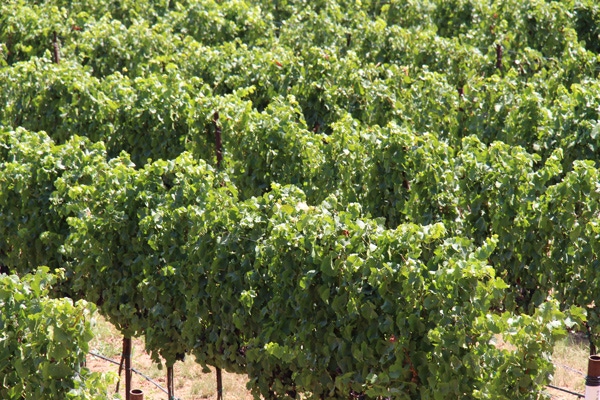
Early, fast-paced harvest likely to yield top-quality results for Central Coast grower
“The activity in the vineyards is fast and furious,” said veteran grape grower Neil Roberts, just two days into September. “We’re scheduled out through the first two weeks of the month.”

With an early bloom and consistently warm weather throughout the season which accelerated growth and ripening of the fruit, the 2014 harvest of the Central Coast’s wine grape crop got off to a strong, unusually early start.
“The activity in the vineyards is fast and furious,” said veteran grape grower Neil Roberts, just two days into September. “We’re scheduled out through the first two weeks of the month.”
His company, Roberts Vineyard Services, based in Templeton, Calif., serves clients in Monterey, San Luis Obispo and Santa Barbara Counties.
In most years, his harvest crews and equipment don’t start picking grapes until the second week of September.
This year, the action for his crews began in the Paso Robles area on Aug. 14 with several white grapes – Grenache Blanc, Sauvignon Blanc and Vermentino – before shifting south to some blocks of Chardonnay and Pinot Noir in the Edna Valley near San Luis Obispo and farther south to the Santa Ynez Valley of Santa Barbara County.
Harvesting of Syrah and several other early reds began in Paso Robles in the first week of September, followed the next week with Merlot grapes.
Roberts expects to finish this year’s harvest picking the last of the Mourvedre and other Rhone varieties and Cabernet Sauvignon by Halloween.
So far, the warm days and cool nights have been ideal for ripening the grapes, by allowing the grapes to retain the correct balance of sugar, acid, flavor and color, he reports.
His white grapes have been testing in the range of 20º to 24º Brix and his reds in the 24º to 26º Brix – the sweet spot for many wine makers.
The potential for a top-quality crop this year got a boost right off the bat when lack of rainfall over the winter allowed soils to warm up quickly, resulting in a fairly early bud break in many of his vineyards, Roberts notes. Later, little in the way of cold temperatures or heat spikes to slow grape development set up the grapes for the early start. That should improve the odds of getting the fruit off the vines before any fall rains can dampen the promising quality prospects.
“This is one of the better vintages I’ve seen,” Roberts says. “Last year’s was really quite good. This year the quality of the grapes will be even better.”
Meanwhile, he expects, production from his vineyards, overall, will come in slightly below average.
His vineyards are irrigated with well water using drip systems. While rainfall has been scarce for quite some time, water tables seem to be stable, Roberts notes.
“We’ll get through the season with the water we have,” he says. “But, we’d sure love to have rains to recharge the aquifer. One thing for sure, our industry is learning how to deal with dry weather, and we’re getting better at managing our use of water.”
In view of the uncertain water supply, he has been careful in managing foliage to balance crop load with the vine’s water needs. He combines visual symptoms with such tools as soil water sensors, vine water potential and weather data to determine the level of water stress and the need for irrigation.
Except for a little mite pressure late in the season, his vineyards have experienced very little activity from insects and diseases, Roberts notes.
In addition to the weather, the market has also been on the growers’ side this year.
“The market looks moderate to strong,” he says. “It seems like most of the grapes are being sold at a solid price. In some cases, though, because of their contracts with wineries and good crop loads, many of our growers won’t even have grapes to sell on the spot market.”
About the Author(s)
You May Also Like



